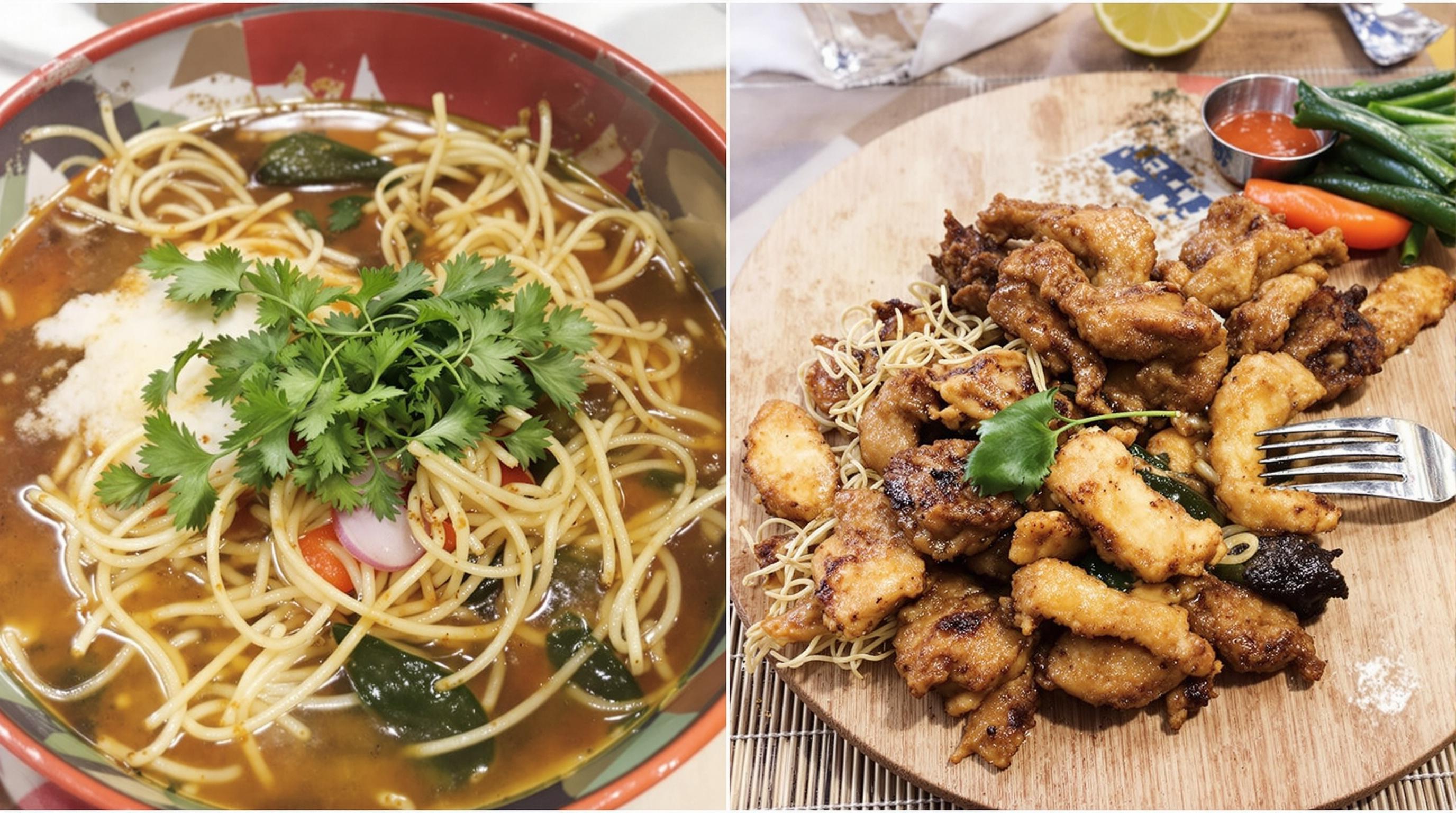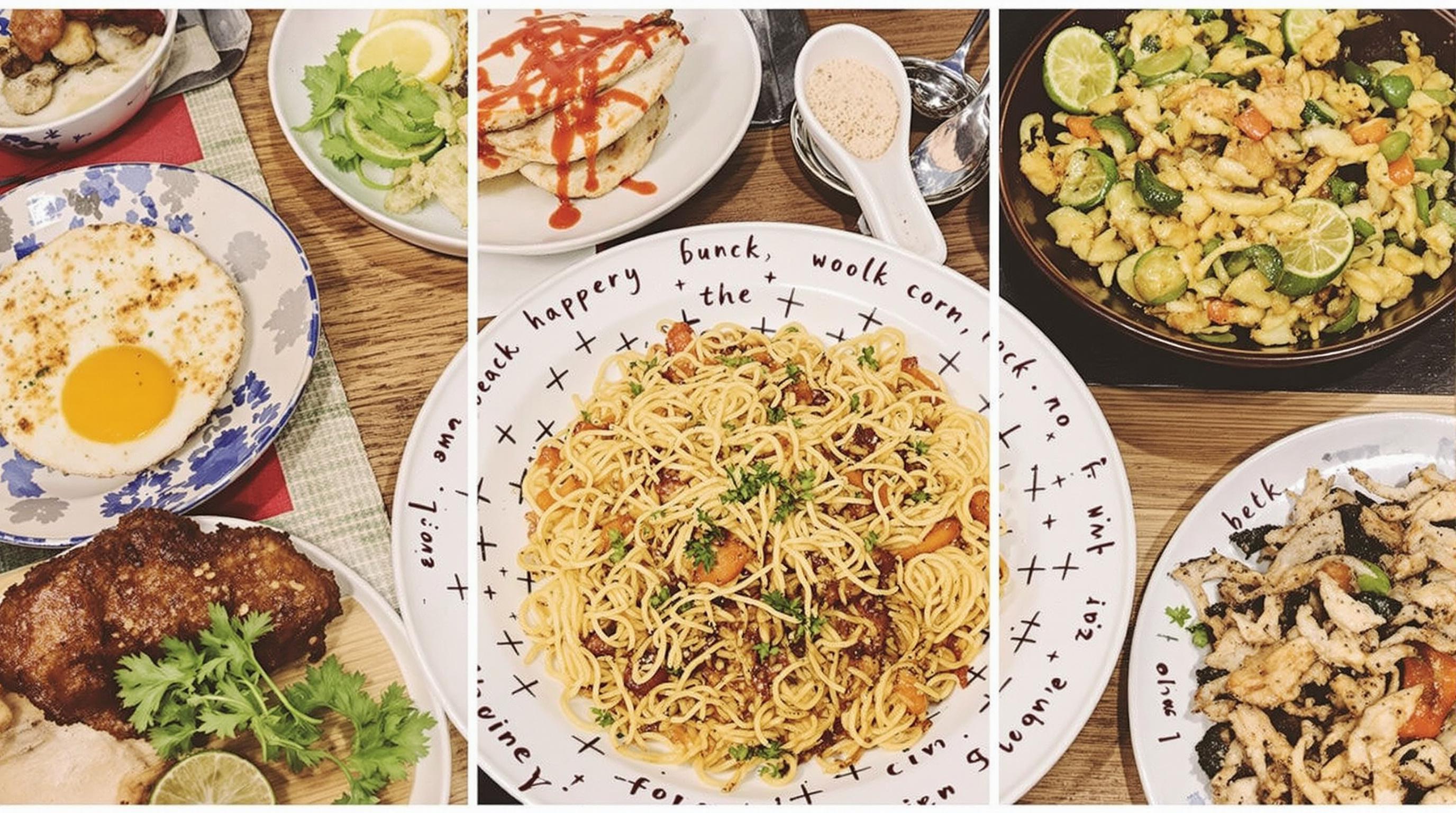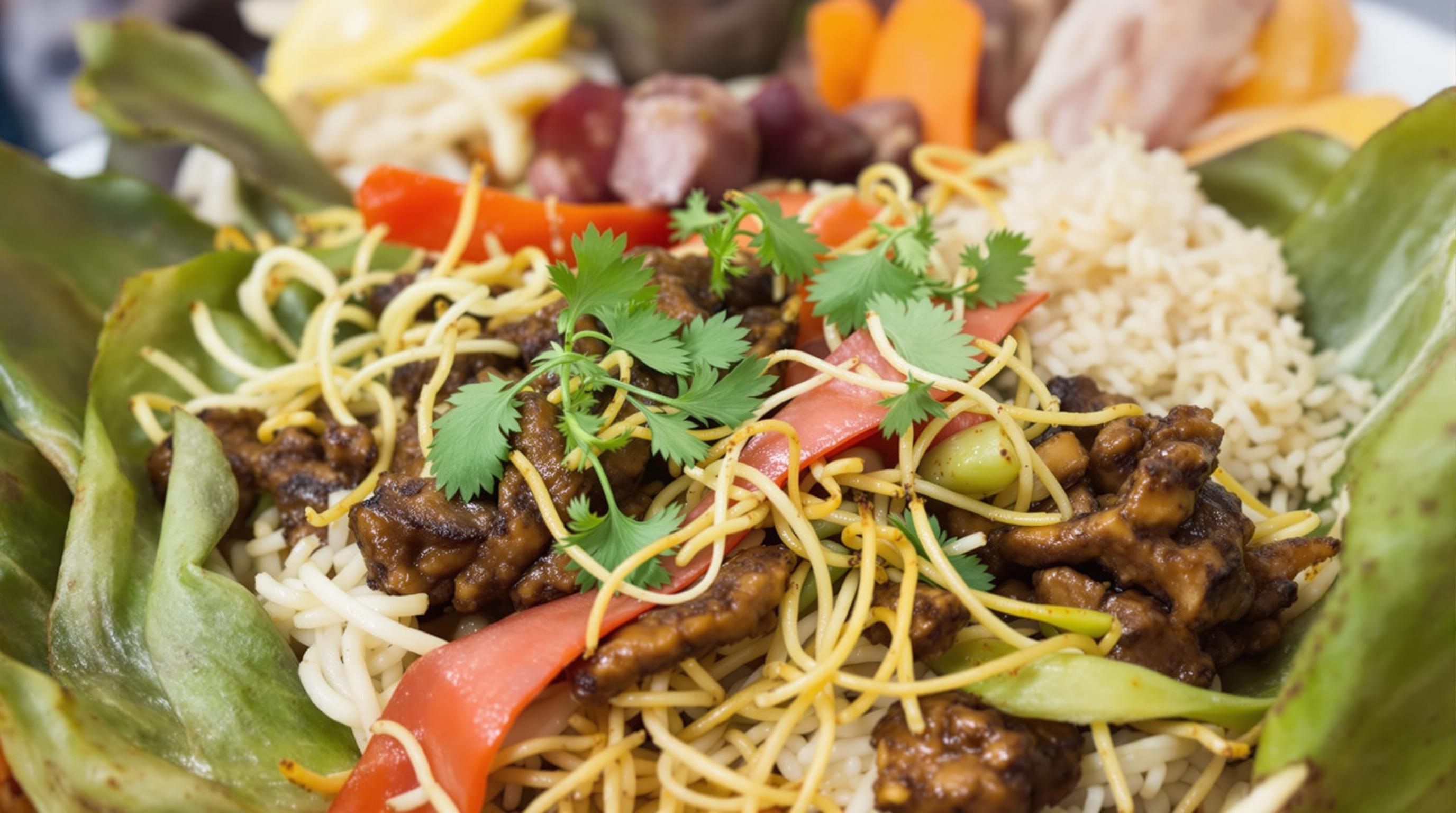Related Articles
- Culinary Cartography: The Unexpected Foods Shaping Local Identity in Urban Landscapes
- Flavors of the Forgotten: Rediscovering Culinary Traditions in the Shadows of Modern Food Trends
- Palate Pilgrimage: The Unlikely Fusion of Ancient Rituals and Modern Local Fare
- Ecosystem Engineers: Celebrating the Role of Nature-Based Solutions in Transforming Eco-Travel Experiences
- Ghost Towns and Green Trails: Unearthing Sustainable Journeys Through Forgotten Landscapes
- Hidden Footprints: Decoding the Carbon Footprint of Digital Nomadism in Edging Towards Sustainable Getaways
12 Obscure Local Cuisines That Offer Unique Flavor Profiles and Uncover the Hidden Narratives of Culinary Heritage
12 Obscure Local Cuisines That Offer Unique Flavor Profiles and Uncover the Hidden Narratives of Culinary Heritage
12 Obscure Local Cuisines That Offer Unique Flavor Profiles and Uncover the Hidden Narratives of Culinary Heritage
1. Cuy - Peru
Cuy, or guinea pig, is a cherished delicacy in Peru, deeply entrenched in its indigenous heritage. This dish dates back to the Inca civilization, where it was prepared for special occasions and ceremonial gatherings. Roasted to a crispy perfection, cuy is often served with potatoes and a spicy sauce, offering a rich and savory flavor that is both unique and adventurous.
The preparation of cuy involves marinating the meat in a blend of local spices, enhancing its natural taste. The crispy skin and tender meat impart a delightful contrast, which is further complemented by the accompanying traditional side dishes. This culinary practice serves as a reminder of the resilience of local cultures in maintaining their food traditions amidst globalization.
While cuy may be a curiosity for outsiders, it represents a connection to Peru's indigenous roots. Sampling this dish in its homeland allows diners to experience more than just a meal; it is an immersion into the historical narratives that define Peruvian society.
2. Stinky Tofu - Taiwan
If there’s a dish that challenges the limits of bold flavors, it’s undoubtedly stinky tofu. This fermented delicacy, often found in night markets throughout Taiwan, boasts a pungent aroma that can send even the most adventurous eaters running. But for the uninitiated willing to dive deeper, stinky tofu presents an explosion of umami that rewards the brave.
The tofu is fermented in a special brine, typically made from vegetables, herbs, and sometimes even seafood, allowing it to develop its distinctive scent and flavor profile. Most commonly served deep-fried with a side of pickled cabbage, stinky tofu captures the essence of Taiwanese street food culture, showcasing its commitment to bold and unrepentant flavors.
While some tourists wrinkle their noses at its smell, stinky tofu is a beloved national treasure that tells the story of Taiwan's food heritage. Engaging with this dish leads to collective laughter and shared experiences, forging connections that extend beyond just culinary appreciation.
3. Poutine - Canada
Hailing from Quebec, poutine is the lowly comfort food that has ascended to cult status. This dish is the epitome of indulgence, comprising crispy fries smothered in rich gravy and topped with cheese curds. Originally considered a humble meal for working-class communities, poutine now enjoys international recognition for its heartiness and flavor.
The dish's origin is hotly debated, with multiple towns claiming to be the birthplace of poutine. Regardless of its roots, poutine serves as a gastronomic representation of Quebecois cultural identity, adapting countless variations across the province. From pulled pork poutine to vegan alternatives, chefs are creatively reimagining this classic dish while staying true to its essential components.
Poutine is more than a guilty pleasure; it’s a dish steeped in authenticity and history. Its evolution reflects social changes in Canada and highlights the importance of regional cuisines in shaping the culinary landscape.
4. Kimchi Jjigae - South Korea
Kimchi jjigae, or kimchi stew, is a staple comfort food in South Korean households. This hearty stew utilizes fermented kimchi along with various ingredients such as pork, tofu, and vegetables, resulting in a dish that beautifully balances spicy, sour, and savory flavors. Its significance goes beyond mere sustenance; it serves as a warm embrace during cold weather or a healing remedy for the soul.
In preparing kimchi jjigae, the cooking process often involves layering flavors through the long-simmering of kimchi, allowing its unique taste to permeate each ingredient in the pot. This dish truly embodies the concept of “spontaneous cooking,” where each household puts their twist on it based on available ingredients, reflecting personal stories and regional influences.
As South Korea embraces global culinary trends, kimchi jjigae remains an iconic dish that encapsulates the country’s cultural heritage. Its enduring popularity illustrates the power of food in fostering community and preserving memories through the generations.
5. Xôi - Vietnam
Xôi, or sticky rice, is a beloved staple in Vietnamese cuisine, showcasing the art of transforming simple ingredients into satisfying dishes. Often served as a breakfast item or snack, xôi can be topped with sweet or savory options, from mung beans to fried shallots, representing an everyday celebration of Vietnam's agricultural bounty.
The delicacy of xôi lies in its preparation; the rice is soaked, steamed, and often deliberately infused with coconut milk or pandan leaf, yielding a nutty flavor profile with a chewy texture. Each region in Vietnam has its signature xôi, allowing for a delightful exploration of diverse culinary traditions within the country.
The communal nature of xôi emphasizes the cultural fabric of Vietnam, where meals are centering points for family gatherings. Each bite of xôi tells a story of local ingredients, traditions, and the deep-rooted connections that bind families together.
6. Kolo Mee - Malaysia
Kolo mee is a delightful Sarawakian noodle dish featuring egg noodles tossed in a fragrant mixture of shallots, soy sauce, and lard, often topped with char siu (barbecued pork), sliced vegetables, and a sprinkling of shallots. Originating from the Chinese community in Malaysia, this dish encapsulates the blend of cultures that define the region’s culinary landscape.
Unlike its popular cousin, the wantan mee, kolo mee stands out because of its unique preparation and flavoring. Each bowl is a celebration of the region’s palate, boasting layers of flavor that highlight the simplicity of fresh ingredients. Locals swear by their preferred stalls, where recipes have been passed down through generations, maintaining the integrity of Sarawakian food heritage.
Kolo mee illustrates the harmonious fusion of different culinary influences in Malaysia, telling the story of cultural intermingling. For travelers, indulging in a bowl of kolo mee offers an authentic taste of Sarawak and invites an embrace of its complex histories.
7. Ceviche - Peru
Ceviche is a true culinary gem native to the coastal regions of Peru. This refreshing dish, made from raw fish marinated in citrus juices and flavored with herbs and spices, exemplifies the country’s commitment to embracing the ocean's abundance. The freshness of the ingredients is paramount, and the dish is best enjoyed as soon as it's prepared.
The marination process is not just a method of preservation; it’s an integral step in developing the dish’s flavor. The acidity of the lime or lemon “cooks” the fish, transforming it into a delectable mix that dances on the tongue. Accompanied by sides such as sweet potatoes and choclo (Peruvian corn), ceviche is a sensory experience that highlights the intersection of land and sea.
For visitors to Peru, tasting ceviche is a rite of passage, one that offers insight into the country’s coastal lifestyle and culinary pride. Each bite transports the diner into the heart of Lima’s bustling fish markets, where vibrant flavors embody the spirit of Peruvian culture.
8. Feijoada - Brazil
Feijoada is a traditional Brazilian stew of black beans cooked with various cuts of pork and beef, resulting in a fulfilling dish that warms the heart. Originating from colonial times, feijoada has evolved into a symbol of Brazilian national identity. Typically served on Wednesdays or Saturdays, it represents the spirit of community and celebration.
The preparation of feijoada often involves slow-cooking the beans and meats together, allowing the flavors to meld beautifully. It is traditionally accompanied by rice, collard greens, and orange slices, emphasizing the combination of bitter and sweet that characterizes Brazilian cuisine.
Feijoada underscores the importance of food as a connector in Brazilian culture. It’s a communal dish that allows family and friends to gather around the table, fostering connections and stirring shared narratives that span generations.
9. Tamales - Mexico
Tamales are a cherished dish deeply rooted in Mexican history and culture. Made from masa (corn dough) and filled with meats, cheeses, or sweet ingredients, they are wrapped in corn husks and steamed to perfection. This labor-intensive food has served as sustenance for centuries and is often prepared for special occasions and celebrations.
The versatility of tamales allows them to showcase the diversity of regional flavors throughout Mexico. From sweet tamales filled with chocolate to savory options loaded with chicken or pork, they capture the spirit of local culinary traditions. Each family often has their special recipe, a veritable treasure passed through generations.
Eating tamales is an experience steeped in ritual. It’s a time to gather, share stories, and savor life’s moments. For many, this dish is more than just food; it reflects the heartbeat of Mexican culture and a profound connection to their heritage.
10. Biltong - South Africa
Biltong is a traditional South African cured meat snack that has garnered international fame, beloved for its rich flavors and satisfying chew. Originating from the need to preserve meat, biltong is typically made from beef or game, salted and spiced before being air-dried to intensify its taste. This technique not only serves to preserve but also transforms the meat into a culinary delight.
The spices used in making biltong, such as coriander and black pepper, contribute to its unique flavor profile, while the drying process ensures a tender yet hearty texture. It’s enjoyed as a snack or paired with a glass of wine, making it a versatile delicacy for any occasion.
Biltong represents a fusion of indigenous techniques and colonial influences, revealing the complexities of South Africa’s culinary history. To taste biltong is to celebrate the rich tapestry of flavors and traditions that define this vibrant nation.




